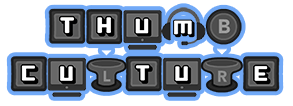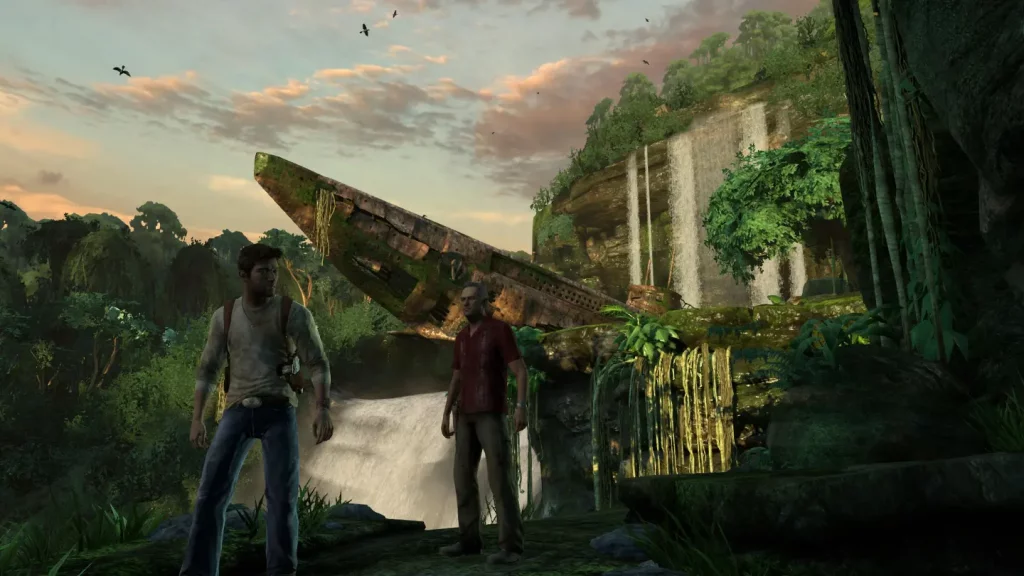
Straightforward narrative driven adventure games come very few and far between these days. We live in a time when most AA or AAA games on the market try to be wallet pinching live services, or bloated open worlds that require as much commitment as your full-time job.
If Uncharted: Drake’s Fortune were to release today, it would easily be seen as an outsider among the crowd. With that in mind, it’s funny to think that not so long ago, Uncharted was the golden example that many AAA game studios tried to follow.
That is what I want to explore with this retrospective: how developer Naughty Dog, with their first PlayStation 3 title, laid the foundation for Uncharted to become PlayStation’s poster child for nearly a decade. Not only that, but how they also changed how the industry approached single-player narrative adventures.
A Playable Summer Blockbuster
Based on classic old swashbuckling adventure films like Indiana Jones, Uncharted was a series of single-player adventure games where players take control of charismatic adventurer Nathan Drake, in action packed globe-trotting adventures.
The series first launched in November 2007. It has since received 4 mainline games, 2 spin-offs, a novel, a comic book series, and a card collecting game. There was even a feature film starring Tom Holland and Mark Wahlberg.
All entries of the franchise have been met with a strong positive reception from critics and fans. Each taking players on a memorable adventure with charming characters, incredible visuals, and insane action set-pieces that put the player right in the centre. Starting with Uncharted: Drake’s Fortune which sees Nathan Drake and his allies search the Amazon jungle, and a forgotten Spanish colony located on a mysterious Pacific Island, in pursuit of the lost treasure of El Dorado.
Story
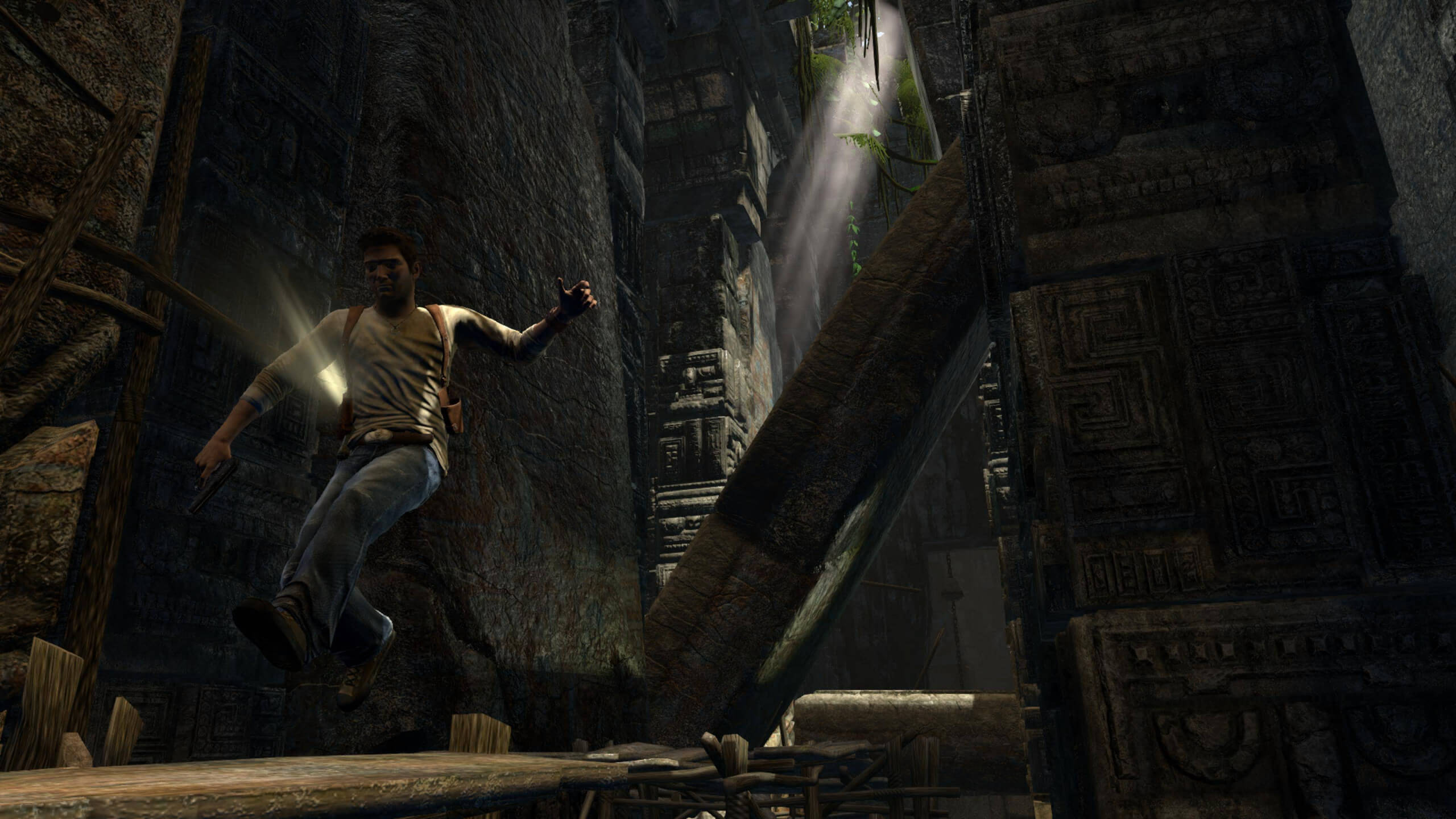
Before 2007, many single-player action games had stories to play through. However, lots of games felt like story was an afterthought, behind the gameplay. Naughty Dog set out to change this with Uncharted: Drake’s Fortune, with the goal of making a game that feels like a playable summer blockbuster. This meant having the game strictly follow a linear design structure to not break the pace of the story. There are no diverging paths or side missions for the player to distract themselves with. You, as the player, are pushing Nathan Drake through this rollercoaster narrative.
The story itself is a straightforward action-adventure, like you may find in any treasure hunting adventure film. Although it does feature a few light twists and turns to keep some engagement. But nothing new or ground-breaking is done with the story, keeping it safe and simple. What really makes the story shine, however, are the cutscenes and performances from the cast.
Capturing Performances
Up until 2007, most mainstream games told their story through hand animated cutscenes, with the characters being performed by actors in voiceover. Although motion capture had already been introduced to video games, Naughty Dog pushed the boundaries of quality further than most. Having their cutscenes performed like a stage production in a motion capture studio with actors performing their roles. Directed by veteran filmmaker Gordon Hunt, the cutscenes feel more engaging and believable to watch. The motion capture technology recording all the subtle body movements led to a more believable human character on screen. Facial animations were still crafted by hand by Naughty Dog animators, which is impressive to see how well they blend with the physical motion capture body movements. Over the next couple of years, we quickly saw many single-player franchises adopting the use of Performance Capture for cutscenes, from Assassin’s Creed to even Grand Theft Auto.
For Uncharted, the developers wisely chose to hire not just voice actors, but actors with stage experience. The characters are cast well, with each actor quickly fitting into the archetype of their characters. For example, Emily Rose as the plucky journalist Elena Fisher and Richard McGonagle as the suave conman Victor ‘Sully’ Sullivan. Each of the cast deliver a solid performance for characters that, in this game, stick to being very standard archetypes.
Villainous
The villains in this game are a bit of a weak link in the story. Although they are given solid performances from Simon Templeman, Robin Atkin Downes, and Jamie Sie, they don’t achieve a lot in the story to challenge our protagonists, making them easily forgettable. The only real stand out villain is Jamie Sie as the comedic Indonesian pirate Eddy Raja, who has a few good scenes.
But of course, the big standout is Nolan North, who portrays the Everyman action hero Nathan Drake. Nolan brings his own sense of humour and input into Nathan Drake, keeping him from becoming a bland, stale protagonist. For example, while a lot of game protagonists at this time were dark brooding tough guys, Nolan decided that Nathan should wince in pain whenever he punches. This helps to keep him real and relatable, because punching people does hurt if you haven’t tried it.
Gameplay
Uncharted: Drake’s Fortune follows a very linear design structure, having the player follow one route to make their way through the story without breaking the pacing. This structure is often built on three different types of gameplay: combat, traversal, and light puzzle solving.
Combat works the same as pretty much every third person adventure of that generation. Players run around an arena, take cover at conveniently placed crates or waist high walls, and shoot enemies with a range of different weapons at their disposal.
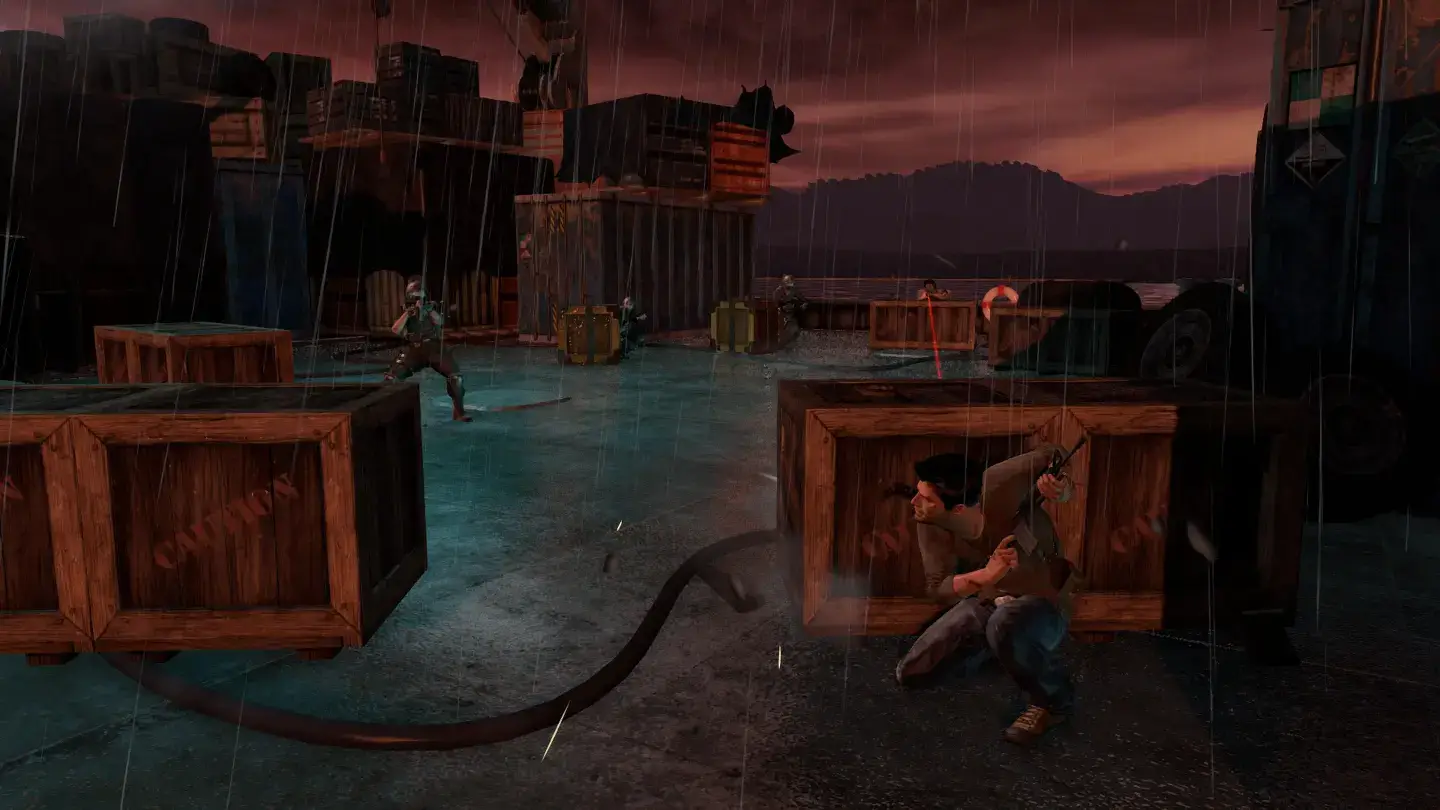
Though nothing new or ground-breaking, but the action provides a decent challenge. The player can only equip one long weapon, like an Assault rifle or Shotgun, and a side-arm. This keeps the player grounded and not overpowered. Each weapon works best in a certain scenario. The Moss-12 Shotgun, for example, is only really being useful in close range scenarios, not in a wide-open space. This encourages the player to keep switching the loadout for what the situation calls for. Ammo is also kept relatively more limited than most shooters, forcing players to conserve their shots.
Old School AI
Although quite basic today, the enemy AI keeps you on your toes. They move around the battlefield trying to flank the player or surround your position. This keeps the player moving around the battlefield, instead of camping in a corner. However, there is not much in terms of enemy variety. In fact, we can pretty much boil it down to 3 variations. You have regular enemies, brutes with shotguns that are a bit tougher to kill, and snipers who use red laser sights the player must keep dodging to avoid being killed in one direct shot. These enemies do not provide much of a challenge to the player; they are easily disposed with a few direct shots.
Guns aren’t the only way to dispatch enemies; there is also good ol’ fisticuffs. Players can take down enemies by repeatedly mashing the ‘Square’ button close to an enemy. It works, but it is too simple, even for back then. There is a slightly more complex combo if the player presses the sequence: ‘Square, Triangle, Square’ when Nathan lands each punch on an enemy. Completing this combo will reward the player with double the amount of ammo dropped by the enemy.
Not So Sneaky
There are also stealth attacks in this game. However, these can feel completely pointless when an entire arena of enemies can detect you after a single stealth takedown. The only purpose it has is just to earn one trophy for killing 20 enemies in stealth takedowns.
It comes across that stealth was mostly descoped from the project. A lot of the concept art shows Drake in stealth scenarios. An entire level set in an airfield, involving stealth, was cut from the game. I believe stealth was abandoned some way through the project due to deadlines or resources, with only stealth takedowns making it into the final product.
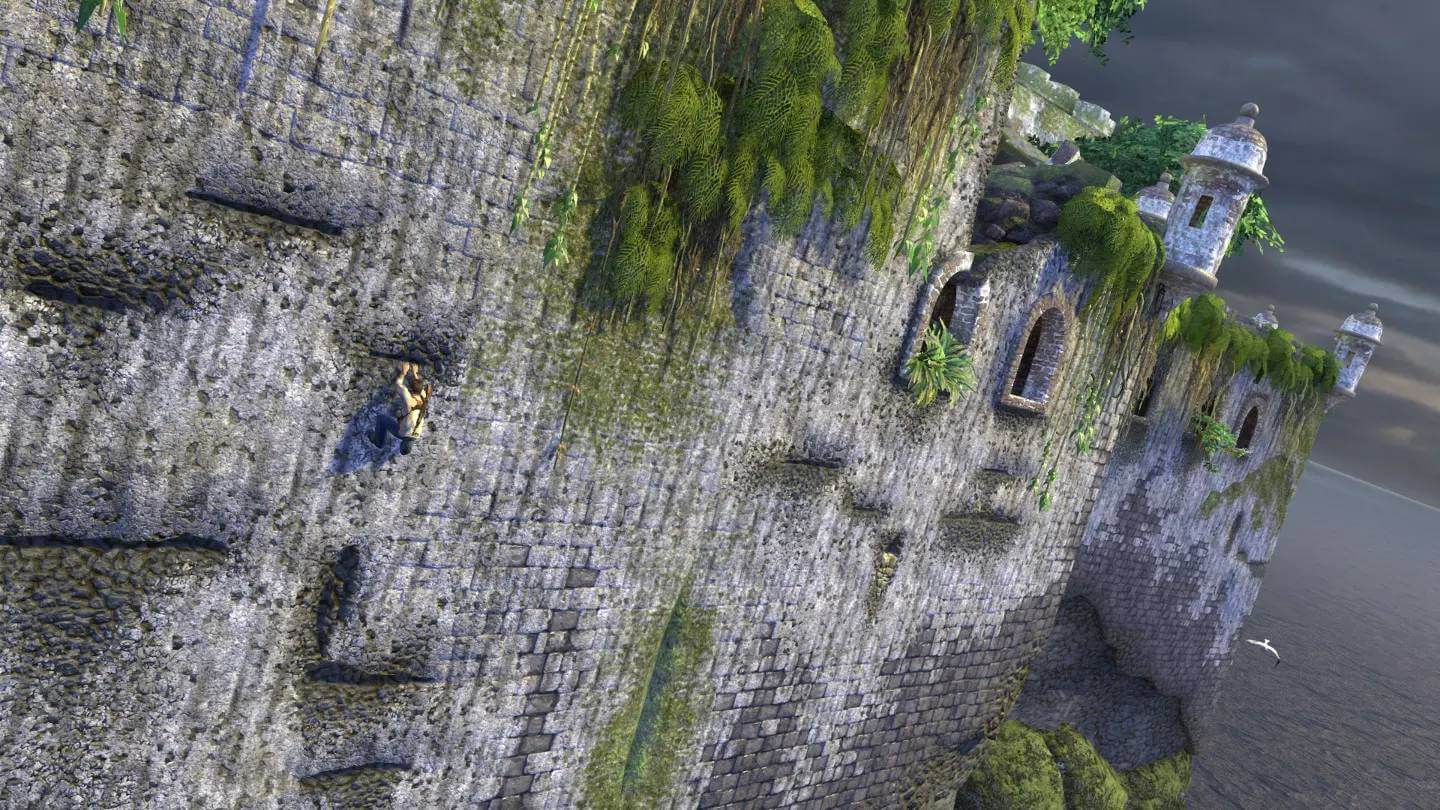
Scaling and Solving
Traversal is the other main gameplay pillar, after combat. Much of this game will have you climbing jungle cliffs, stone fortresses, and underground crypts. Through a modern lens, the climbing does look cartoony. This contrasts to Naughty Dog’s vision of creating believable moving human characters. Seeing Nathan Drake shuffle across handholds and swing on ropes and vines like he’s Tarzan breaks the illusion that this is an everyday guy.
Clear highlighted paths, telling the player what direction to follow, takes any challenge out of the experience. Later games improved this by having the player work out where to climb.
The last pillar of gameplay is puzzle solving. Occasionally, the game will put the player in Indiana Jones style puzzles to solve. These are genuinely a breeze. Essentially the player is given the journal of Sir Francis Drake that has the solution written down. Failing this, if you stand around long enough, Drake or one of his allies will point out clues to solve the puzzle.
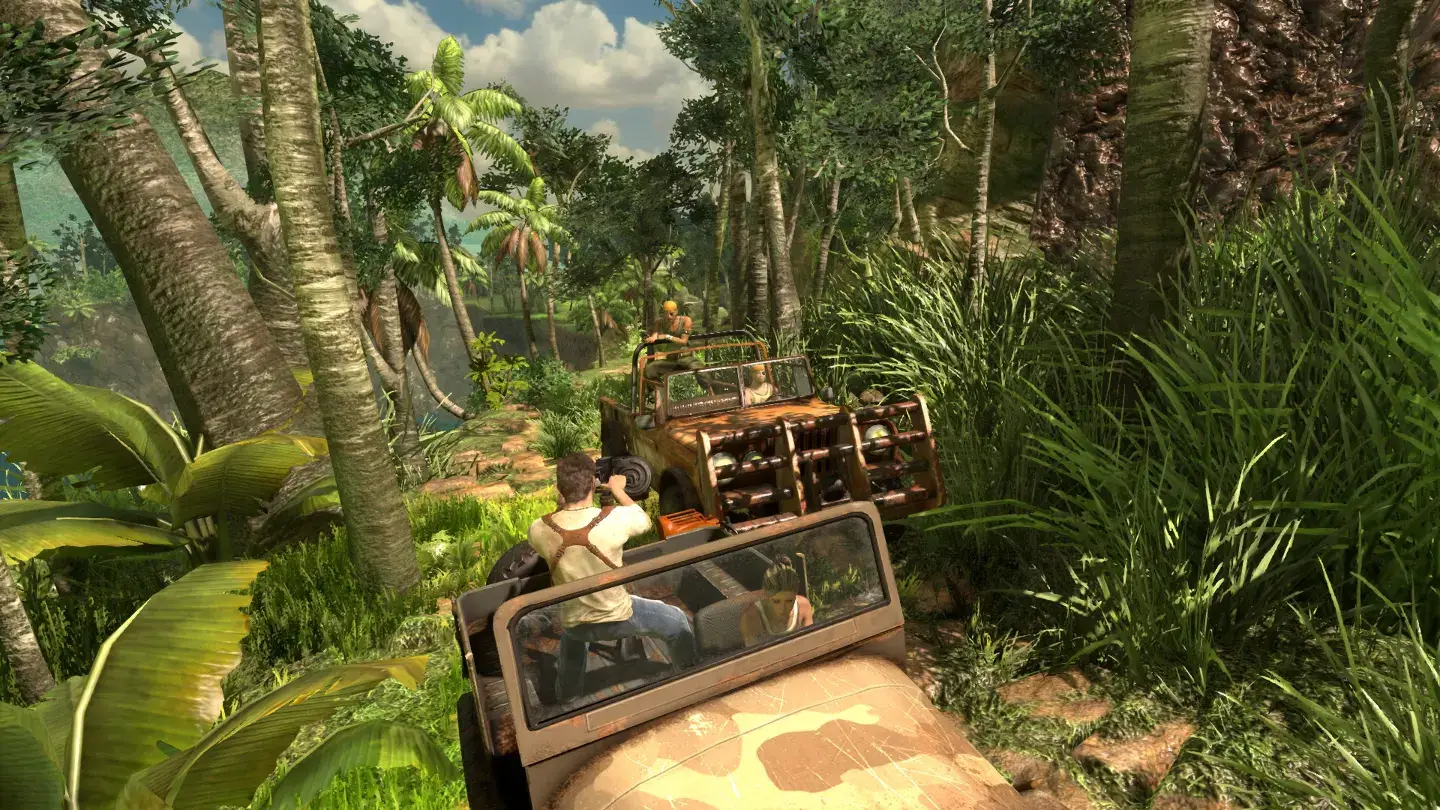
What the Uncharted series was most known for though was large bombastic action set pieces. From Drake hanging from a cargo plane in the Arabian desert, to hanging off a derailed train in the Himalayas. In Drake’s Fortune, however, these are limited. The game does have a couple set pieces. These include driving a jet-ski over a river filled with explosive barrels, or manning a machine gun in a high-speed chase through the jungle. But these sequences were more simplistic. They don’t yet reach the high level of absurdity and spectacle the franchise is known for. This game was built as a foundation for these incredible set pieces to come later in the franchise.
Graphics and Audio
In the Nathan Drake Collection, released in 2015, the game received a massive upgrade. The clunky SIXAXIS controls were dropped, and the visuals improved, including changing the character model of Nathan Drake. This gave a consistent character model across all 3 games included in the collection. Despite this upgrade, many of these visual and technical innovations included in the original 2007 game are available to see on display in the Nathan Drake Collection.
Back in 2007, many AAA games on the market were combat shooters that had you fighting in battle arenas featuring every shade of the colour brown. Uncharted: Drake’s Fortune was a breath of fresh air, having the player run around in lush green jungles, sunken ruins of a Spanish colony, and even a haunted Nazi submarine base.
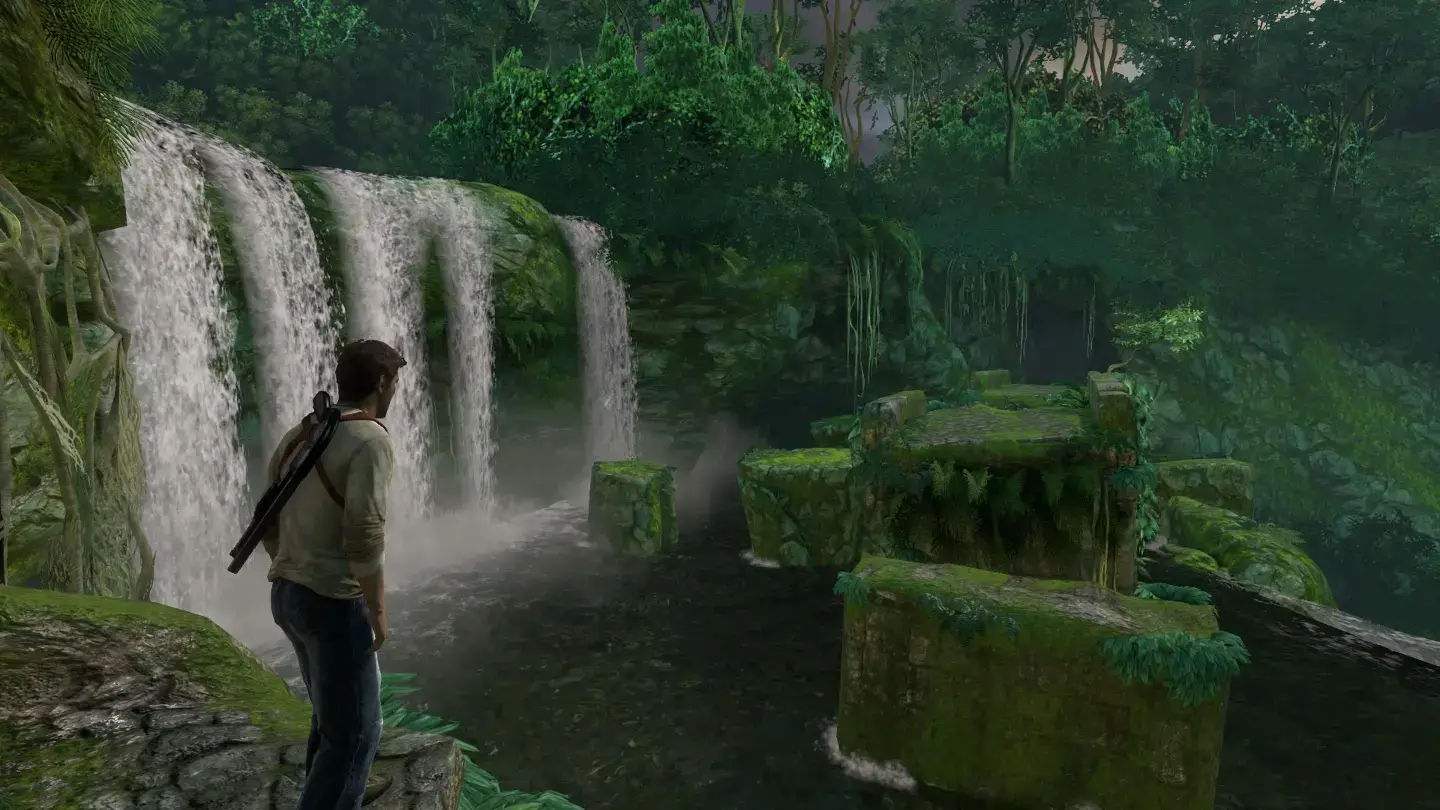
Other improvements include details like blades of grass reacting as they are walked through. Or how Drake changes the way he moves around the world based on his surroundings. He would run-around calm and collected as he explored the jungle, but be more frantic as he took fire from enemies. These were technical innovations that helped push Uncharted into the spotlight of the game industry.
Wetting Water
Most famously, developer Naughty Dog showcased how water reacted to Nathan Drake in the world. It may look like a trivial thing now, but back in 2007, seeing water react realistically to a player walking through it, or shooting it, was an impressive feat to achieve. Many games today still don’t have your character’s clothes get wet after swimming, Naughty Dog achieved this with Drake’s Fortune. Not just fully wet, if you only walked through a puddle, only the bottom of his jeans would get wet. It’s still as impressive to see today as it was in 2007.
The soundtrack composed by Greg Edmonson was something unique to other games of the time. He created a score that featured the inclusion of tribal instruments rarely used in video games to create a soundtrack that feels adventurous but also mysterious.
Longevity
Once the main story is complete, there really is nothing much to do. Although, you can play again on a higher difficulty, or find all 61 of the hidden collectible treasures scattered in hidden corners throughout the game. These will unlock different character skins for Drake and side characters, new render modes, weapons to select at any time, and even a cool collection of the behind-the-scenes videos and concept art.
However, if you’re looking for something more than just a straightforward action adventure, you’re not going to find much outside of the six-hour campaign.
Final Thoughts
Are you feeling tired of wallet draining live services and bloated grind fest large open worlds? Then I recommend taking a break and play a straightforward linear story-driven narrative game like Uncharted: Drake’s Fortune. It’s a great game with fun characters and easy to understand mechanics. It’s also a game that can be played over a weekend and finished in around less than 10 hours.
As a game that somewhat paved the way for cinematic, single-player experiences, Uncharted: Drake’s Fortune should be a must-play. Then check out the rest of the series. What are you waiting for? Adventure is out there.
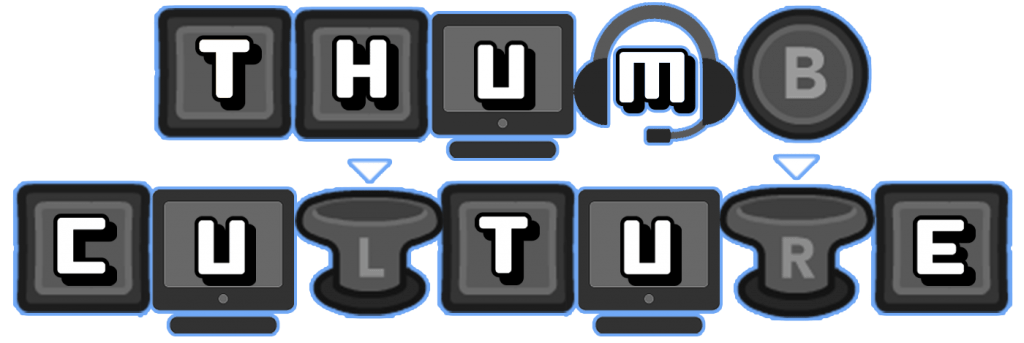
YouTube | Facebook | Twitter | Instagram | Discord | Podcast
